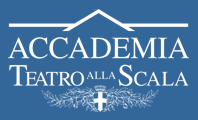Bernardini Giuseppe Review of Opera theatre La Scala
Some notes on the Teatro alla Scala
Some notes on the Teatro alla Scala
From Wikipedia the free encyclopedia.
The Teatro alla Scala, often referred to informally as "la Scala", is the main opera house in Milan. Considered as one of the most prestigious theaters in the world, for 240 years it has hosted the main artists in the international field of opera, and, more generally, of classical music, often commissioning works still present in the billboards of the major theaters in the world.
The theater was inaugurated on August 3, 1778 with Europe recognized composed for the occasion by Antonio Salieri and took its name from the church of Santa Maria alla Scala demolished to make way for the New Regio Ducal Teatro alla Scala
Since its foundation it has been the seat of the homonymous choir, the orchestra, the ballet corps, and since 1982 also the Philharmonic. The theater complex is located in the square of the same name, flanked by the Casino Ricordi, now home to the La Scala Theater Museum.
History
- The premises -
The first structures dedicated to opera in Milan were the court theaters that alternated in the courtyard of the Royal Palace: a first hall named after Margaret of Austria-Styria, wife of Philip III of Spain, erected in 1598 and destroyed by a fire on 5 January 1708 and the Regio Ducal Teatro, built nine years later at the expense of the Milanese nobility on a project by Gian Domenico Barbieri.
For the stage of these theaters, works by important composers were commissioned, including: Nicola Porpora (Siface), Tomaso Albinoni (The fortress at the cimento), Christoph Willibald Gluck (Artaxerxes, Demofoonte, Sofonisba, Ippolito), Josef Myslive ek (The great Tamerlano), Giovanni Paisiello (Sismano nel Mogol, Andromeda), Wolfgang Amadeus Mozart (Mithridates, king of Pontus, Ascanio in Alba, Lucio Silla) ...

Comments: